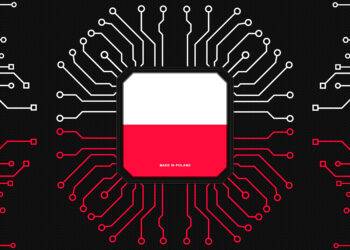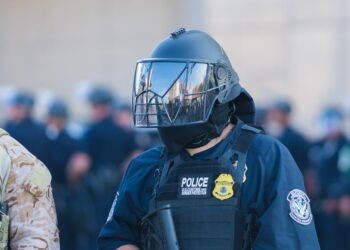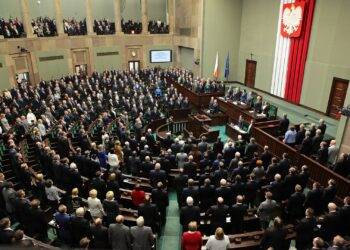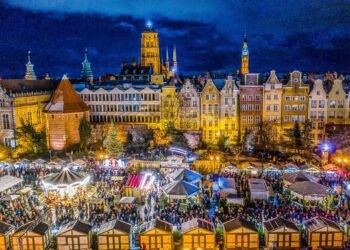On Monday, July 22, the streets of Warsaw will once again be filled with the somber procession of the March of Remembrance. This annual event pays tribute to the victims of the deportation action carried out in the Warsaw Ghetto during World War II. The Great Liquidation Action began on July 22 and concluded on September 21, 1942, during which approximately 300,000 Jews were deported from the Warsaw Ghetto to the Treblinka extermination camp.
During the Nazi occupation of Poland, the deportation of Jews from the Warsaw Ghetto was a central part of their genocidal plan. The Great Liquidation Action marked one of the most brutal phases of the Holocaust, where Jewish men, women, and children were forcibly removed from their homes and transported in inhumane conditions to the Treblinka extermination camp.
The journey itself was deadly, with many perishing en route due to overcrowding, starvation, and disease. Those who survived the transit faced immediate death in the gas chambers of Treblinka. The systematic deportations were meticulously organized, aiming to eradicate the Jewish population in Warsaw and ultimately across Europe. The horrifying efficiency of these operations resulted in the near-total destruction of Jewish communities, leaving behind a legacy of unimaginable loss and suffering.
“We set out from the Umschlagplatz monument, following a route that varies each year, in a march to honor the victims,” said Anna Dobrowolska-Balcerzak, coordinator of the March of Remembrance and head of Cultural Projects and Communication at the Jewish Historical Institute, the event’s organizer. “Each year, we strive to highlight one or several heroes or a collective group. Last year, we focused on the civilian resistance in the ghetto, which led to the 1943 uprising. In previous years, we have honored teachers and displaced persons from smaller ghettos.”
This year’s march will commemorate the rabbis of the Warsaw Ghetto. “We selected five rabbis to tell this story: Josef Lejb Gelernter, Kalonimus Kalman Szapiro, Szymon Huberband, Szymszon Sztokhamer, and Menachem Ziemba,” Dobrowolska-Balcerzak explained. “We aim to showcase their actions, such as teaching in secrecy and organizing self-help, highlighting the religious aspect beyond mere piety and faith, also showing how religion was a source of hope or, conversely, disillusionment for many.”
The march will start at Umschlagplatz and end at Dzielna 5, where Kalonimus Kalman Szapiro lived during the occupation. “We have partnered with Hos Gallery, located in that building, and together with artist Norbert Delman, we will unveil an art installation that metaphorically represents the rabbis’ efforts to maintain religious and non-religious spirits in the ghetto,” Dobrowolska-Balcerzak said.
The route will pass through Stawki, Andersa, Anielewicza, and Zamenhofa streets, concluding at Dzielna 5 at the intersection with Karmelicka. “Although we don’t pass specific memorial points for our rabbis, the entire area is deeply connected to their lives. Huberband lived on Zamenhofa, and Ziemba on Karmelicka,” she noted. The march will conclude with the unveiling of the artistic installation and the reading of Szapiro’s final sermon, delivered on the Sabbath preceding the start of the Great Liquidation Action. The Warsaw Jewish Community and the cantor from the Nożyk Synagogue will also participate, with the cantor singing a prayer.
A key element of the March of Remembrance is the memory ribbons. “Each year, we and our volunteers write the names of victims who perished in the Great Liquidation Action on these ribbons,” Dobrowolska-Balcerzak said. “Though we don’t have a complete list of these victims, each ribbon bearing a name restores the memory of individuals within the vast number of the murdered. At the end of the march, we tie these ribbons to elements of the installation or exhibit, serving as an artistic accent to the memorial.”
Participants will receive march packages, including a brochure that provides a broader context of Jewish religious life in Warsaw before and during the war, biographies of the five commemorated rabbis, and details of accompanying events. The brochure also includes an English translation.
“The March of Remembrance is open to anyone who wishes to honor the memory of the victims of these tragic events,” Dobrowolska-Balcerzak emphasized. “In August and September, we also organize thematic walks, discussions, and workshops to continuously commemorate the Great Liquidation Action until September 21.”
This solemn event serves as a poignant reminder of the atrocities committed and the resilience of those who lived through them, ensuring that the memory of the Warsaw Ghetto’s victims is never forgotten.


















